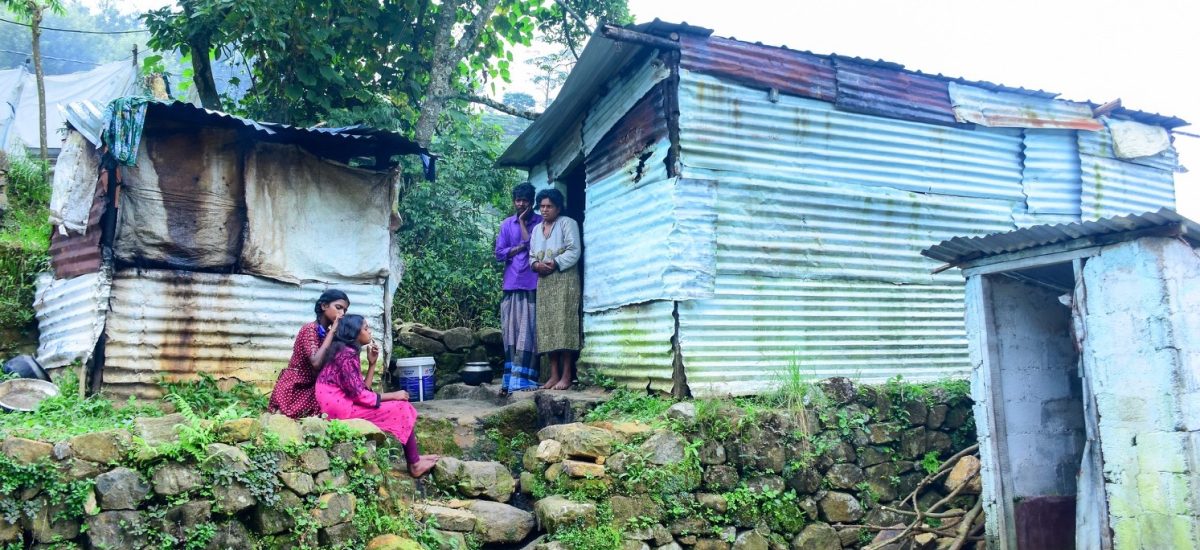Photos courtesy of CPA
200+: Beyond the Struggle is an exhibition amplifying the voice of the Malaiyaha Tamil community through their own images and stories. Organised by the Centre for Policy Alternatives (CPA) in collaboration with grassroots organisations Suya Shakthi and Uva Shakthi, the exhibition at the Lionel Wendt Art Gallery is the culmination of a multi-year effort to transform how society perceives the Malaiyaha Tamil population – descendants of Indian Tamil workers brought to Sri Lanka during the British colonial period to work on tea estates. The initiative was supported under the Strengthening Social Cohesion and Peace in Sri Lanka (SCOPE) programme, co-funded by the European Union and the German Federal Foreign Office.
The exhibition is the second phase of the broader Kahata project, named after the Sinhala word for plain tea, kahata, which is often bitter. This metaphor serves as an evocative symbol of the community’s lived experience: a life of economic contribution steeped in social marginalisation. The first phase, titled Te Kahata, focused on documenting the structural injustices experienced by the community such as substandard housing, lack of access to basic services and systemic invisibility.
While Te Kahata recorded struggle, 200+: Beyond the Struggle reframes the narrative. It doesn’t deny the pain but it refuses to let that be the full story. Over 295 photographs, 25 narrative vignettes and 20 short films offer not only a visual archive of hardship but also a celebration of resilience, contribution and quiet triumphs. As CPA researcher Lahiru Kithalagama says, “We’re not only talking about the problems anymore. We’re showing how our community has grown, contributed and helped build this country.”
What makes this exhibition particularly powerful is its authorship. Twenty young people from the Malaiyaha Tamil community were trained in photography, video production and community mapping. The result is a visual narrative seen through the community’s own eyes, not curated by outsiders but created by those who live the stories they tell. Lahiru adds: “When people from the community take these photos, it’s more powerful. It’s not just about technique; it’s about perspective. They see things others would miss.”
The stories are deeply personal. One image shows a family who built their home from fertiliser sacks, an architectural portrait of both ingenuity and deprivation. Another tells of a girl named Susantika, a national level sprinter who, despite lacking access to coaching or nutrition, continues to train with hope. A small business owner in the hills of Badulla defies stereotypes of estate workers, building a thriving sweet shop from scratch. Literature scholars, migrant mothers and young workers all feature in this multi-dimensional, deeply textured portrait of a people.
The exhibition doesn’t stop at just storytelling; it aims to catalyse policy reform. The issues raised in the photographs are far from abstract. They reflect urgent, systemic problems: landlessness, lack of legal recognition, inadequate housing, wage insecurity and a near total absence of local government engagement in estate areas.
Despite being citizens of Sri Lanka, the Malaiyaha Tamil community continues to be governed through an outdated estate management system, a colonial relic that denies them the same municipal services other citizens receive. Lahiru says, “If a road breaks in Colombo, the local council comes. But if it breaks in the estate, it’s up to the estate management. That is the injustice we are talking about.” In 2018, amendments to the Pradeshiya Sabha Act theoretically allowed for local government authorities to engage with estate communities. But implementation has been slow or non-existent. According to Lahiru, it’s not just about building roads or houses; it’s about recognising our people as part of Sri Lankan society.
The exhibition will travel to Badulla and Hatton, bringing the stories back to their origins. Plans for an exhibition at the National Library in Parliament were denied permission despite invitations sent to numerous policymakers. Still, the team remains determined. “We started with photographs but our goal is policy reform. And to get there, we need to make people understand, not just sympathise but act,” Lahiru says.
Perhaps the most enduring change the exhibition fosters is within the youth who created it. Many entered the project with little knowledge of photography or even the complexities of their own community’s history. Through training and storytelling, they emerged not only as artists but as activists. A young woman from the project reflected, “This journey has grown into something far greater than photography – it’s become a call for recognition, connection, and lasting change.” This is the heart of the exhibition: a movement of consciousness. It’s about equipping a generation to look at their world with clarity and giving them the tools to change it.
When reconciliation can often remain an abstraction, the exhibition offers a grounded, tangible path forward. It reminds us that art is not ornamental, it is instrumental. Where policy dialogues falter, a photograph can speak. Where statistics fail, a story connects. Art may not solve the problems but it encourages people to care, and caring is the first step toward change.
With the exhibition, the Malaiyaha Tamil community has not just reclaimed its narrative; it has rewritten the terms of engagement. This is no longer a story about tea workers in the hills. It is about citizens demanding dignity, recognition and a rightful place in the national story.
On June 24 a panel discussion will take place with Prof. Prabha Manuratne, Senior Lecturer Sithumini Rathnamalalal, photographer Kaushalya Nandasenal and writer and lawyer R. Shadakopan, facilitated by Upali Amarasinghe.
200+; Beyond the Struggle will be shown at the Lionel Wendt on June 23 and 24.

